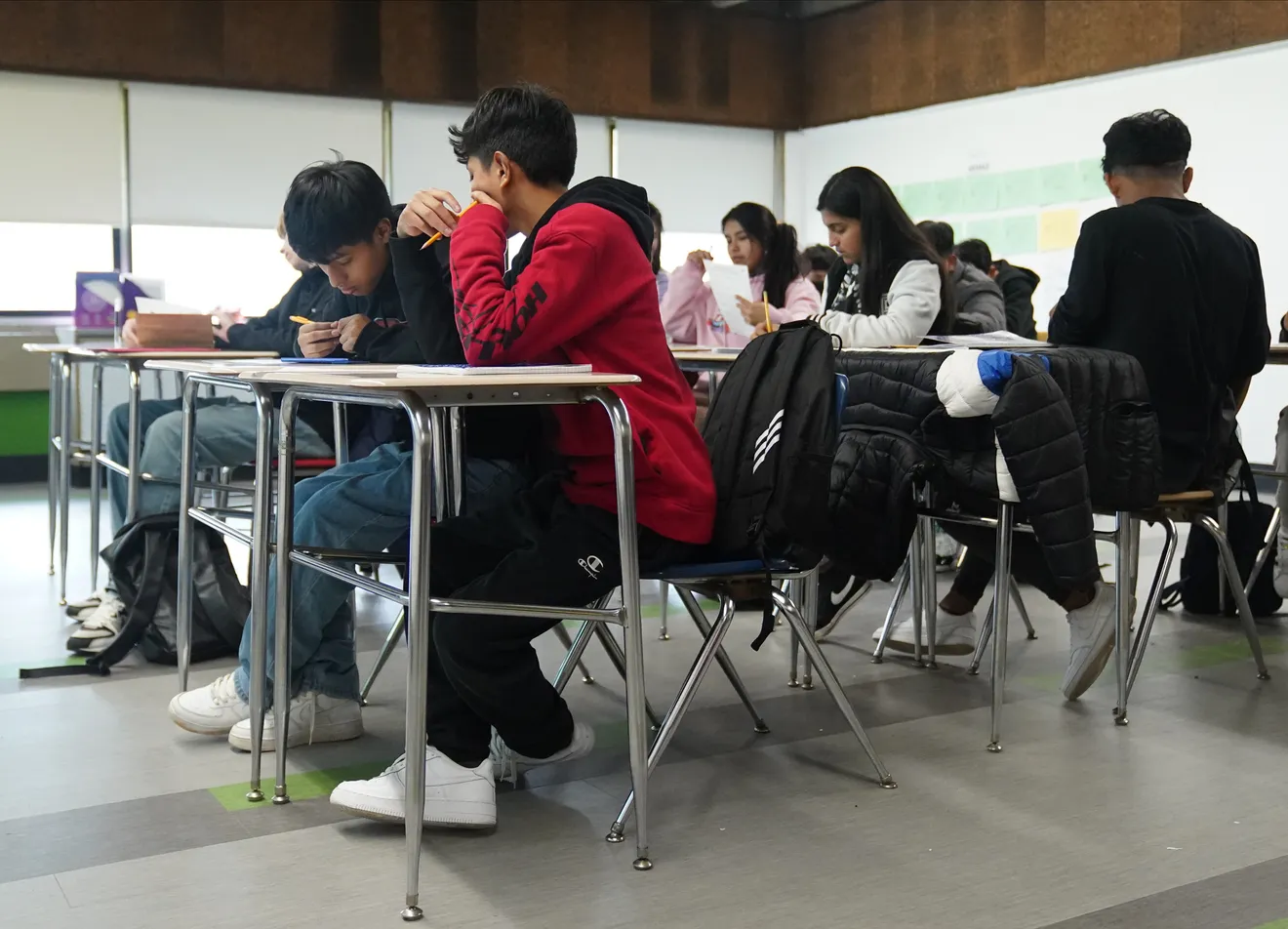Foil: Your right to Know.

Students Newcomers Academy in Pomona Middle School Photo/ John Meore The Journal News
“Between July and mid-October, East Ramapo officials documented 938 new students coming to the school district − all of them English language learners and many recent immigrants. Two-thirds of them were high school age.
But there were no seats left in classes at Ramapo and Spring Valley high schools.
By the end of September, about 26 students didn’t have class schedules. By October, 50 teens were without schedules.
With no classes to go to, many didn’t show up to school.
The district had to act fast, said Melissa Barrow, assistant superintendent for student programs, assessment and evaluation. “Once they sit at home, we lose them.” Within weeks, the district developed its Newcomers Academy, a standalone program housed in a wing of Pomona Middle School. It opened Nov. 1.
All Newcomers Academy students, although they range in age, are considered to be ninth-graders. Students can transfer to one of the district’s two high schools if they can provide transcripts from their original countries or are assessed and placed in a different grade. Many will stay in the program at Pomona and then matriculate into the next grade at Ramapo or Spring Valley high school, whichever is their home school.
Many students, amid immigration and other upheavals, have had interrupted schooling, with gaps in formal education. Or they can’t access transcripts.
“We’re being very specific,” Barrow said of placing students in the right place at the right time for them.
Speech goes on: Activist Angela Davis comes to Rockland after critics shut down school-related appearance
Whose call is it? A glimpse inside complaints to schools about books, lessons, diversity
Pro-cop or anti-BLM? ‘Thin Blue Line’ flag in Irvington raises another community conflict
Barrow recalled a student from Ukraine explaining that he had no access to education records. “All records were destroyed,” she said. “He said his house doesn’t exist anymore.”
While a variety of languages are spoken by the students in the academy, 95% are Spanish speaking, Barrow said. The Village of Spring Valley, which makes up a large portion of the district, has long been a newcomer community. In recent years, its population has shifted from residents with Haitian roots to those from Latin America.
The influx of high school-age students with different levels of education presents a short-term dilemma for East Ramapo, but also points to a long-term pattern and challenge.
Since 2020-2021, the public school population has increased nearly 14%, based on East Ramapo Superintendent Clarence Ellis’ estimates that this year’s enrollment is around 10,500 students.
Barrow said she couldn’t determine the district’s future needs, but the Newcomers Academy is clearly needed now. “We had three new students this week,” she said during a classroom visit, “and it’s Tuesday.”
At risk for dropping out
Advocates have said that the growing population of Latino students has been vulnerable for years, especially English language learners. According to 2020-2021 state data, nearly 70% of East Ramapo’s public school students were Latino and 43% English language learners.
At the beginning of the 2020-2021 school year, the district reported that a majority of its students were considered “chronically absent” or “at risk” as thousands of kids still lacked school-provided Chromebooks to participate in remote learning.
East Ramapo’s graduation rates are the lowest in the county and dropout rates, especially among Latino students, are high.
The district, the most fiscally strained in the state, educates more public school kids than any other in the county. It also provides mandated services, including transportation, for three times as many private school children. The school board, run by majorities of men who are seen as favoring the private school community that sends their kids to yeshivas, has been slammed by activists for failing to seriously address the needs of public school kids.
Barrow told school board members at a Nov. 15 meeting that the separate campus for English language learners provides “a sense of community.”
Students are also connected in various ways to the high school that they will eventually attend. The teens follow a high school bell schedule so they can participate in extracurricular activities. And personnel from the high schools visit the academy often.”
Read the complete Journal News story here.





